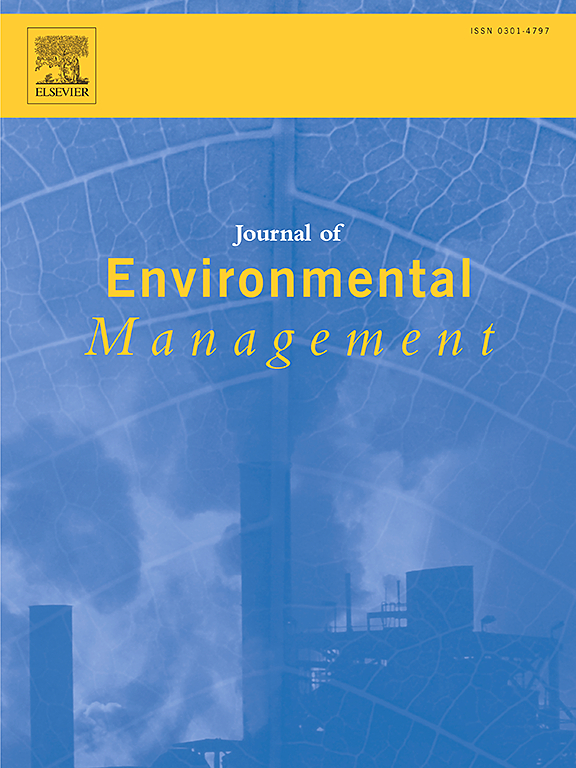Long-term nitrogen application decreased mineral-associated organic carbon while increasing particulate organic carbon in purple soil in southwest China
IF 8
2区 环境科学与生态学
Q1 ENVIRONMENTAL SCIENCES
引用次数: 0
Abstract
In recent years, anthropogenic activities have increased nitrogen (N) input into terrestrial ecosystems, profoundly impacting soil organic carbon (SOC) sequestration. However, the potential mechanisms through which N affects mineral-associated organic carbon (MAOC) and particulate organic carbon (POC) remain unclear. To address this gap, we conducted a 12-year field trial applying continuous N application (0, 90, 180, 270, and 360 kg N·ha−1) in a maize agro-ecosystem. We assessed plant biomass (yield, straw, and root biomass), microbial properties (enzyme activity, biomass, and diversity), soil chemistry (pH, N availability, and base ions), mineralogy (oxides and silicates), and SOC fractions to elucidate the primary control mechanisms influencing MAOC and POC. Our findings showed that N application increased SOC and POC by 6.56%–10.4% and 43.1%–54.0%, respectively, but decreased MAOC by 7.31%–17.1%. And N application increased plant biomass, but decreased soil pH (pH from 6.7 to 5.6), base ion concentrations (K⁺, Na⁺, Ca2⁺, Mg2⁺), amorphous oxides, and illite content. Partial least squares path model (PLS-PM) and correlation analyses indicated that N application enhances root biomass while increasing microbial decomposition, and ultimately their combined effect increased POC. The decline in MAOC is primarily attributed to soil acidification decreasing the C input from microbial residues, altering mineral composition and diminishing the minerals' capacity to protect SOC. Thus, our study demonstrates that N addition predominantly increases POC through enhanced root biomass, while reducing MAOC by decreasing microbial biomass and weakening mineral protection. These insights provide a deeper understanding of the mechanisms governing SOC fraction dynamics in answer to N inputs in agroecosystems.
长期施氮减少了中国西南紫色土壤中的矿物相关有机碳,同时增加了颗粒有机碳
近年来,人为活动增加了陆地生态系统的氮输入量,对土壤有机碳(SOC)的固存产生了深远影响。然而,氮影响矿物相关有机碳(MAOC)和颗粒有机碳(POC)的潜在机制仍不清楚。为了填补这一空白,我们在玉米农业生态系统中进行了一项为期 12 年的田间试验,连续施用氮(0、90、180、270 和 360 千克/公顷-1)。我们评估了植物生物量(产量、秸秆和根生物量)、微生物特性(酶活性、生物量和多样性)、土壤化学(pH 值、氮的可用性和碱式离子)、矿物学(氧化物和硅酸盐)和 SOC 分馏,以阐明影响 MAOC 和 POC 的主要控制机制。研究结果表明,施用氮能使 SOC 和 POC 分别增加 6.56%-10.4% 和 43.1%-54.0%,但 MAOC 却减少了 7.31%-17.1%。施氮增加了植物生物量,但降低了土壤 pH 值(pH 值从 6.7 降至 5.6)、碱离子浓度(K⁺、Na⁺、Ca2⁺、Mg2⁺)、无定形氧化物和伊利石含量。偏最小二乘路径模型(PLS-PM)和相关性分析表明,施用氮能提高根系生物量,同时增加微生物分解,最终它们的共同作用增加了 POC。MAOC 下降的主要原因是土壤酸化减少了微生物残留物的 C 输入,改变了矿物质组成,削弱了矿物质保护 SOC 的能力。因此,我们的研究表明,添加氮主要是通过提高根系生物量来增加 POC,而通过减少微生物生物量和削弱矿物质保护来降低 MAOC。这些见解加深了人们对农业生态系统中SOC组分动态响应氮输入的机制的理解。
本文章由计算机程序翻译,如有差异,请以英文原文为准。
求助全文
约1分钟内获得全文
求助全文
来源期刊

Journal of Environmental Management
环境科学-环境科学
CiteScore
13.70
自引率
5.70%
发文量
2477
审稿时长
84 days
期刊介绍:
The Journal of Environmental Management is a journal for the publication of peer reviewed, original research for all aspects of management and the managed use of the environment, both natural and man-made.Critical review articles are also welcome; submission of these is strongly encouraged.
 求助内容:
求助内容: 应助结果提醒方式:
应助结果提醒方式:


